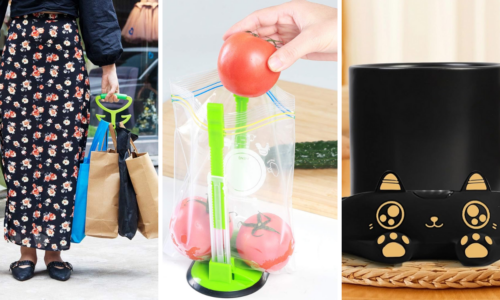The products and services mentioned below were selected independent of sales and advertising. However, Don't Waste Your Money may receive a small commission from the purchase of any products or services through an affiliate link to the retailer's website.
Keeping pests out of your garden is an ongoing task that keeps most seasoned gardeners busy around the clock. Whether your pests are of the furry (and sometimes cute) four-legged variety, the tiny six-legged variety (or really any variety at all) one thing is for sure: they can cause costly and sometimes irreversible damage to your garden.
Stopping their damage starts by knowing which pests are actually present in your garden. You can do this by monitoring their footprints and droppings and inspecting the damage they’ve left behind.
Once you’ve figured it out, it’s time to install your deterrents. If you’re interested in learning which deterrents you can utilize to keep certain pests at bay, continue reading.
Apply Repellent
There are repellents on the market for all varieties of pests, and they can be sprayed, dusted on plants, or merely left around your garden to deter pests.
This repellent by Bonide, available on Amazon works for a variety of pests including deer, rabbits, raccoons, squirrels and more.
It comes in the form of granules that can be scattered around your garden and triggers nasal irritation in pests that come close to your plants trying to get a whiff (or bite). They are non-harmful to critters and are not harmful to your plants when applied according to instructions. In addition to the granule application, you can find sprays and concentrates from Bonide available on Amazon as well.
Install Fencing
Fences are a great way to keep pests from gaining easy access to your plants. The best technique is to install a fence that’s close enough to the ground so smaller critters like rabbits can’t get underneath, and that’s high enough so that deer can’t easily jump over it.
This mesh fence from Lowe’s is 3 feet tall, which is high enough to keep deer from easily jumping over it, and has a ½-inch square mesh weave that will keep smaller pests at bay, too.
It’s 3 feet tall by 25 feet long, is made of galvanized steel and is both lightweight and flexible, making it easy to install.
Spread Netting
Netting is another great pest deterrent for plants that are low to the ground. They can be tossed over rows of plants, creating a barrier between them and any animals eyeing your strawberries for snacks.
This garden net from Walmart is made from a high-quality mesh material and can be cut to accommodate any space in your garden. Because it’s transparent, you won’t necessarily need to lift it in order to check on your plants.
Add A Cage
If you have plants that grow vertically or that you’d prefer not to drape with a net, installing a cage over them may be your best bet.
This crop cage on Amazon comes in two sizes: 4 by 8 feet and 6.5 by 10 feet. It’s easy to install, easy to move around and is made of sturdy stainless steel rods. It has zippered doors, which means you can walk in and out of the cages easily to water and tend to your plants as needed.
It’ll be sure to keep squirrels, birds and other pests away from your plants, and can also keep your garden clear of other windblown clutter.
$89.99 (was $119.79) at Amazon
Grow Unappealing Plants
Another way to keep pests away from your garden is by growing plants that may be unappealing to them. Thankfully, some of these plants include herbs that can actually serve the dual purpose of being useful to you.
Examples of these types of plants include basil, geraniums, mint and thyme. They can be planted on the perimeter of your garden or between rows to deter insects such as moths and aphids from munching on your plants.
This mix of geranium seeds from Amazon is a great choice and comes in the colors scarlet, white, violet and rose.
Whatever You Do, Don’t Feed Them
While deer, rabbits and even raccoons can be adorable, it’s best not to encourage them by leaving food out for them to nibble on. While you might think it’ll fill them up and deter them from eating your plants, you’re actually just offering an invitation for them to come knocking on your garden door for seconds.
Human food is not suitable for wild animals, and they may even die if they eat something that doesn’t suit their diet, according to the USDA. If their numbers increase, it’s also possible that they can spread diseases to other nearby animals, or even pets. Your best bet here will be to employ any of the above measures instead.













